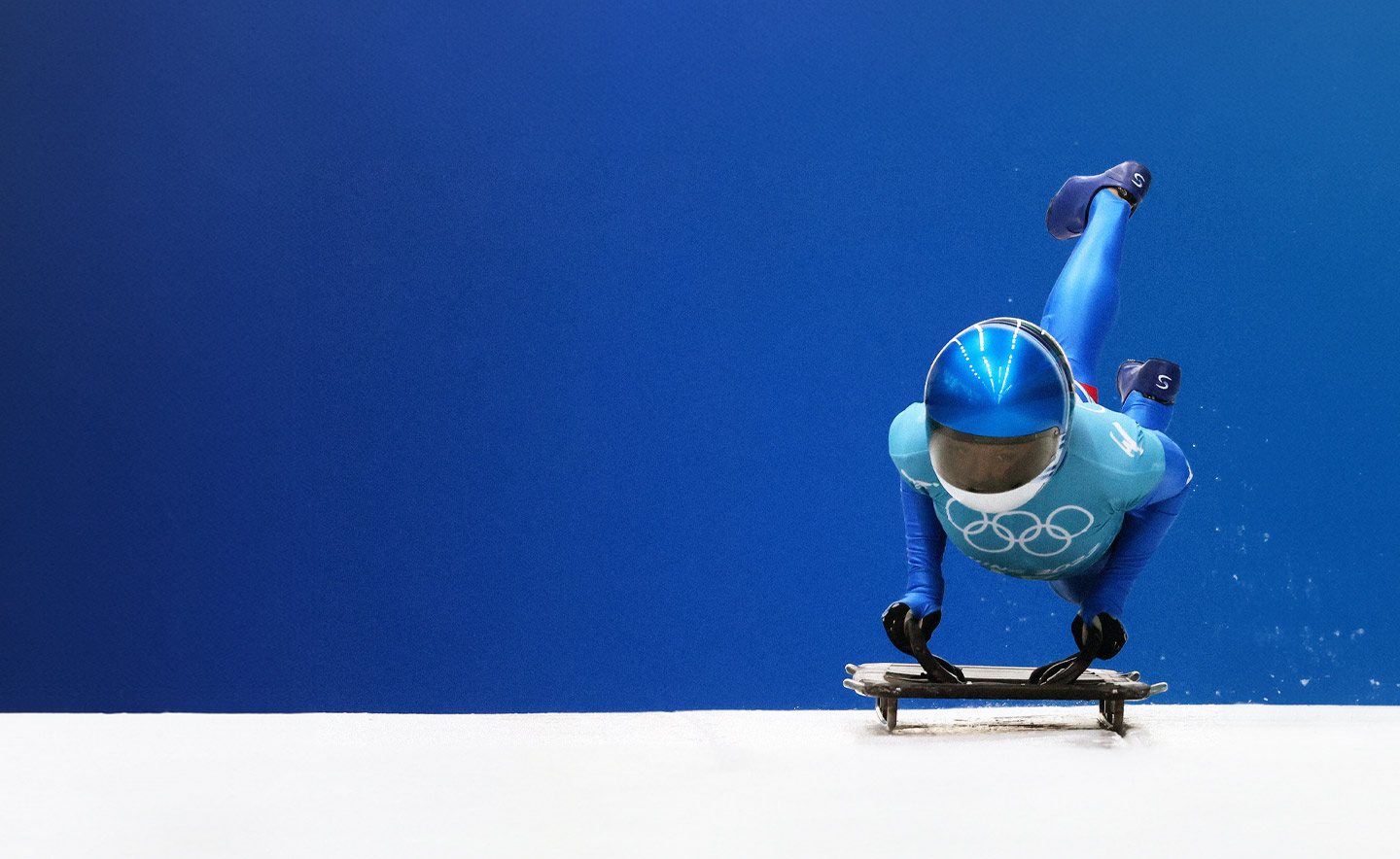
Skeleton
This is one of the oldest winter sports. Unlike luge, skeleton racers lie face down. As we look forward to Milano Cortina 2026, here is all you need to know about skeleton.
Competitions
Skeleton, like bobsleigh and luge, is one of the oldest winter sports. The athlete starts standing as in bobsleigh and after the initial push, jumps face down onto the sled, descending the icy track at 130-140 km/hr and guiding the equipment using body movements. Unlike luge, the skeleton racer lies face down.
Competitions at Milano Cortina 2026 will consist of 3 events.
- Men's individual
- Women's individual
- Mixed event
Olympic History
Skeleton dates back to the late 19th century in St. Moritz, Switzerland. Here, the Cresta Run was built in 1885. This natural ice track 1214 metres long is still considered a legendary run in the sport. In 1887, participants began to run the race face down following the invention of this variant by the Englishman McCormac. Skeleton was born.
The discipline was named in retrospect. It dates back to 1892 when a new type of sled was introduced: essentially a metal frame resembling the structure of the human skeleton.
For decades, skeleton competitions took place only in St. Moritz. It is no coincidence that skeleton was included in the Olympic programme for both editions of the Games hosted by the Swiss resort (1928 and 1948). Due to its dangers and the lack of suitable tracks, the sport remained absent from the Olympic scene for over fifty years, but was reintroduced in the Olympic programme in Salt Lake City 2002 with the men's and women's events. At Milano Cortina 2026, the mixed team event will be added to the programme.
Basic Rules
In skeleton races, the athletes start standing as in bobsled. At the green light, they have 30''' to start. After the initial run from 25 to 40 metres, where they push the sled, holding it by the special supports, they jump onto the sledge, guiding it throughout the descent using just body movements. Speeds of up to 130–140 km/hr can be reached.
The races take place on an ice track which is also used for luge and bobsled. The length of the track ranges from 1200 metres to 1650 metres, with a maximum slope of 12%. The skeleton track at Beijing 2022 featured the first 180° turn in the Winter Olympic Games.
Curiosities about Italian Championships
The first and only Italian gold medal in skeleton at the Olympic Games was won by Nino Bibbia. It was also the very first Italian medal won at the Winter Olympics.
FAQ
Here are the answers to your questions.
-
Which new skeleton events have been introduced at Milano Cortina 2026?
-
Who is the most decorated male skeleton athlete at the Olympic Games?
-
Who is the most decorated female skeleton athlete at the Olympic Games?
-
Which nations have won the most medals at the Olympic Games?
Discover the Other Sports
History, curiosities and the rules of all the other Olympic disciplines planned for Milano Cortina 2026






















































































